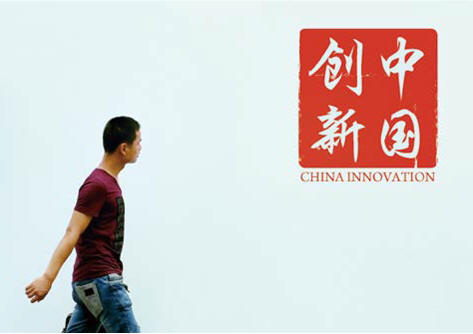
China has set out on a significant transformation process from being "the workbench of the world" to becoming a modern society underpinned by a progressive economy. No wonder the term "innovation" is echoing from government institutions and universities, reverberating in factory halls and office buildings, jumping from media releases, bouncing off the billboards and from shopping shelves. But how within this chaotic chorus, can one distinguish real innovations from the mass of non-innovations? Is there innovation in China and what does it look like?
We set out to see where China's companies stand at present, what can be expected from future developments and how foreign business people can benefit from and tap into Chinese innovation today and tomorrow.
Chinese Companies are Pushed and Pulled towards Innovation
China hasn't been known for being a hotbed of innovation in the past. This is changing though. The conditions under which Chinese companies are working today drastically differ from those of the last 3 decades. On the demand side, the comfortable base of Western customers and their demand for products is rapidly eroding, while markets in developing countries and in China itself are only picking up slowly. On the production side costs for Chinese businesses are rising with the main drivers being labor, real-estate and raw-materials and over capacities in various industries are building up. Under these increasingly harsh conditions, companies are forced to undergo structural changes. "Chinese companies have built their success and their strategies around 'cheaper and faster'. Companies have to become more sophisticated in their products, their structures and their productivity. This also counts for R&D where more strategic, organized ways of working and attracting talent have to be sought," the consulting firm McKinsey & Co. writes in one of their recent surveys on innovation in China. These indicators all clearly show that the push towards innovation is getting stronger!
Government promotion
On the pull side, the Chinese government is creating no doubts about its intentions to support its economy becoming more modern and knowledge driven where research, high-tech and innovation are supposed to play key roles. In its recent 5 year plan Beijing has created the political underpinning to double the resources from 2010 to 2015 and to spend 2.2% of its GDP on projects fostering innovation in multiple industries and the education system.

"It seems that one of the main differences compared to programs in recent years is the governments focus," says the CEO of CreateLED, an LED Display producer from Shenzhen. "In the past the government would select key industries and then either just support the big players or pour huge amounts of money to basically anyone in that field. This happened in the LED sector and led to huge over capacities and a situation of heavy price competition, many unhealthy companies and market failures. There was little space or incentive for companies to take time and really innovate. Now support seems to be given more selectively, where creative companies get a chance to receive funding."
"The local government has a program for excellence in technology and quality", a packing machine manufacturer from Wenzhou tells us. "This helps financially, but also to gain reputation in the market and to collaborate with good new suppliers." Chinese leaders have also acknowledged that a key driver for innovation comes from research departments at universities and therefore ramped up the financial resources flowing into this direction. "The government funding some professors get for their projects are substantial, even for European measures. And some of the labs have world class, state of the art infrastructure," says a Swiss PhD scholar from ETH, one of the world's top universities, who is conducting research in organic chemistry at the Chinese Academy of Sciences in Shanghai.
Industrial clusters
China has already created the seeds of 22 Silicon Valley–like innovation hubs within the life sciences and biotech industries. In semiconductors, the government has been consolidating innovation clusters to create centers of manufacturing excellence. The same is being applied to the creative industry. Such an example is the newly created Ningbo Industrial Design and Creative Center, which opened in 2011 and covers 340'000 sqm. The local government has invested 3 billion RMB with the aim that the NIDCC "will absorb several hundred domestic and foreign well-known design and creative units and over ten thousand high-end design and creative talents". The targeted firms find inexpensive modern office space and state of the art infrastructure spread over a large compound and four huge glass office towers.
Among the facilities accessible to the tenants are equipped and staffed material testing and research laboratories, rapid prototyping sites, event and showroom spaces, on-site service providers offering general legal and intellectual property rights support as well as cafes and restaurants. "This surrounding is quite unique," states the branch office manager of ARTOP one of China's biggest industrial design firms. They have just moved into one of the bright offices with a splendid view onto the central plaza of the creative park. "The costs for the office space or using the public infrastructure here are below market prices and the quality is fairly good. Slowly, this place is attracting more and more businesses. There are design companies from various fields, multi-media companies, software and web firms, fashion labels etc."
It seems that the path towards modernization, professionalization and innovation is set for Chinese companies. But such a huge change from a midlow- end manufacturing economy to a mid-high-end innovation and service economy is no small thing and it will certainly not happen overnight.
How You can Benefit from Chinese Innovation
Be part of the Chinese innovation wave
There is indisputable innovation power blooming in China across a multitude of industries and in various fields. This opens up opportunities for foreign business people. Here we sum up the major fields and give an overview on the best ways to tap into China's innovation potential.
Benefit from the Chinese capability of cost cutting, speed and scaling
A large part of the Chinese economy has been built around cost effective manufacturing and high volumes. Not only do these manufacturers have to undercut foreign competitors, but also local companies, in order to succeed. Selling into their home markets, Chinese firms face an equally, if not even harsher cost pressure. Companies who successfully adapted to this have developed specific strategies for "cheaper, faster, more". A great opportunity to benefit and learn from!
Produce in or source from China
China has an unparalleled depth of supply chain, which means the majority of goods in a production process are locally made and available and transportation and communication infrastructure are very good.
Mid-low-end goods: Price competition from developing countries such as South-East-Asia is growing. But still many Chinese producers have a cost advantage and a surplus of many years experience in doing business with foreign clients. Further sustainability topics (labor, safety, environment) are improving more quickly in China and companies are more open to change. It is the overall package that foreign companies can find here instead of solely focusing on price.
Mid-high-end goods: Chinese companies, employees and infrastructure are evolving in knowhow, experience and quality. This offers chances to produce increasingly complex goods in China and to tap into the cost and speed advantage many firms have.
Co-operate, control and balance: Integrate your suppliers closely into your supply-chain and treat them as partners, not just as cheap deliverers of goods. Fair and not overly authoritarian control doesn't mean distrust, but earns you respect and sends a signal that you take rules and arrangements with your partners seriously. Key issues to carefully oversee are quality, price arrangements, intellectual property and corporate social responsibility. Afair partnership takes two sides. Foreign companies should test and control the quality of their supplier relationship and his products and to balance between multiple suppliers without starting a price pressure spiral.
Learn from Chinese companies
Many successful Chinese companies are experts in controlling cost, ramping up capacity and creating speed. They know their business environment and have well adapted to it. This creates opportunities to learn!
Accept your supplier's suggestions: It is crucial to find a balance between your own expectations and procedures with those of your supplier. In the end, the product has to work for you. But suppliers might have different ways to achieve these products than you are used to. Leave enough space for the Chinese partner to do it his way. Listen and accept his suggestions if they do not have a negative effect on the product and try to develop processes together.
Learn and adapt: Some of the strategies Chinese companies use to create cost, scale and speed advantages might also work for you. Take the opportunity to find out as much as you can about your Chinese partners' processes. Adapting some of them in your own company might give you a cost, speed or scale advantage over your competitors.
Benefit from developing products in China
Many major multinationals in various industries believe in the local innovation power and are setting up R&D centers in China. On one side they're aiming to take advantage of the huge pool of talented employees and researchers, and on the other it is to develop China market specific products, where local knowledge is essential.
But local R&D is not a field reserved to the big global players only. There are very interesting opportunities for small and medium sized companies to integrate China into their product development process.
Use Chinese product design and engineering companies
China has a huge amount of specialized service providers in industrial design and engineering who have experience with foreign customers and products. These companies usually work very fast, display high skills in using state of the art soft- and hardware, cost a fraction of their foreign competitors and have excellent knowhow and access to local production methods and manufacturers.
Develop products for China in China
Many Western products need adjustment or are just not compatible with the Chinese market. To create a fit with local customer needs it is essential to integrate local knowledge into developing such products. Local companies such as market researchers, product designers, engineers and producers have this knowledge and can come up with highly applicable solutions and market specific innovations. Again, these services are available at any scale and for any kind of budget. So this focused approach to the Chinese market is open to any size of company.
See More: Innovation in China: Copy Cat? Innovation Tiger?





